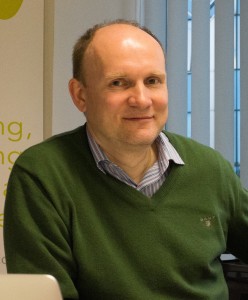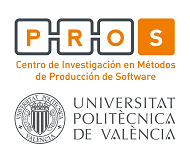(*)Due to last minute issues, the scheduled keynote by Peri Locoupoulos has been replaced.
Larry Constantine
Understanding Human Activity in the Enterprise
Abstract. Enterprise modeling has made great strides in recent decades in providing tools for modeling business processes, information and material flows, and management of enterprise resources, among others. Theory and practice have lagged, however, in building better understanding of a crucial aspect of the enterprise: human activity as broadly conceived as it takes place in the workplace. This keynote will introduce recent advances and extensions to human activity modeling and will argue for potential benefits from modeling human activity within and across the enterprise.
Short bio:
Larry Constantine, is a Fellow of the Association for Computing Machinery and a Life Member of the Industrial Designers Society of America. An award-winning designer and author, he has more than two dozen books and over two hundred papers published, including Software for Use (co-authored with Lucy Lockwood), winner of the Jolt Award. He is the recipient of the Stevens Award for his pioneering work in software engineering, including the invention of data-flow diagrams and the concepts of coupling and cohesion. Under his pen name, Lior Samson, he is the author of eight novels, including Bashert, a 2015 winner of the Hoffer Award, and most recently, Flight Track (Gesher Press, 2015).
Janis Stirna, Anne Persson
Facilitation and Management of Enterprise Modeling Projects – Experiences and Challenges
Abstract. Enterprise Modeling (EM) has proved to be a practicable approach that supports congruent organization and information system (IS) development by creating an integrated and commonly shared model describing different aspects of an enterprise (e.g. goals, business process, concepts, rules, etc.) EM is used for the purposes of (1) developing the business, (2) ensuring the quality of business operations, and (3) using EM as a problem solving tool. EM usually is organized in the form of a project or it is a part of a larger, e.g. organizational or information system development, project. Much of the success of projects using EM depends more on the quality of the process of modeling than on the modeling language used. A key part of this is participatory stakeholder involvement. Creation of the Enterprise Models using a participatory approach needs to be supported by a modeling practitioner. The professional EM practitioner may take on a number of sub-roles, e.g. EM project leader, facilitator of a modeling session, and tool expert. As project leader, the modeling practitioner negotiates the goals for the modeling project and plans the modeling process together with the project or problem owner. The main responsibility of the modeling practitioner is that (1) the models produced have good enough quality to accomplish the project goals; (2) that the chosen EM method is suitable for modeling the problem at hand and that (3) the method is effectively used to accomplish the project goals. This talk presets author’s experiences in the area of facilitating and managing modeling projects in terms of the following competence areas related to EM process: defining scope and objectives of the modeling project, planning for project activities and resources, planning for modeling session, gathering and analyzing background information, interviewing modeling participants, preparing modeling sessions, conduct modeling sessions, writing meeting minutes, analyzing and refining models, as well as resenting the results to stakeholders.
Short bio:
Janis Stirna has received a degree of Doctor of Philosophy in Computer and Systems Sciences from the Royal Institute of Technology, Sweden in 2001 and Associate Professor (docent) from Jönköping University, Sweden in 2008. In 2015 he was promoted to full professor at Department of Computer and Systems Science (DSV), Stockholm University.
Rafael Montes
Event Sourcing Implementation of a BPM System: A practical Experience
Abstract. Business Process Management Software is now widely used with vendors solutions targeting different needs. An analysis of our past experience offering software solutions in the defence, utility and aerospace sectors and the recent demands of our clients has made us focus on providing BPM software, which support amongst others the following requirements:
- Business logic expressions as a function of historical events
- Need for full traceability
- Support for asynchronous operations
- Possibility of analysing the data as it was at certain time in the past.
- Support for analytics on real data.
This keynote will comment on our recent experience developing a BPM Engine based on our own “event source” data storage system, where we have obtained satisfactory results with respect to our initial objectives and also explore possible development relating Business Process Models and asynchronous online/offline operations.
Short bio:
Rafael Montes Macías is a software professional and entrepreneur with extensive experience in the areas of Technical Documentation Systems (S1000D based), Configuration Management and Integrated Logistic Support Systems, especially in the Defence Sector and BPM Software solutions. He was until 2011, the main partner at PAP Tecnos Innovación, S.A., a supplier of several institutions of the Spanish Defence Sector. In 2012 formed Tecnogram Procesos with other investors and with the active collaboration of the UPV-PROS. Since recently he is involved as Product Manager, with a team in Moscow, in the development of a BPM software engine for a UK based company. He holds a B.Sc. (Hons) In Artificial Intelligence & Computer Science and a M.Sc. in Computer Systems Engineering, both by the University of Edinburgh (U.K.). Science and a M.Sc. in Computer Systems Engineering, both by the University of Edinburgh (U.K.).












